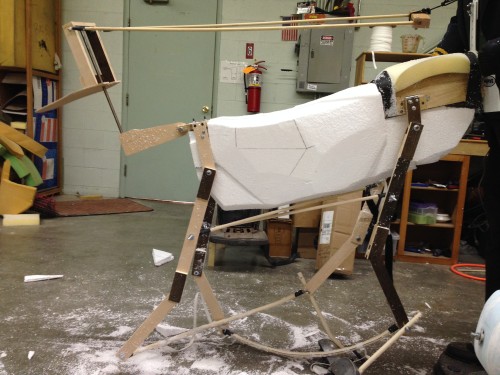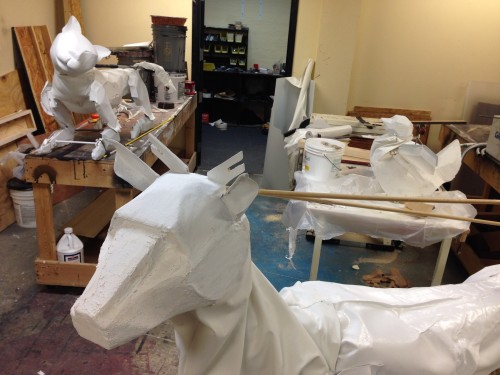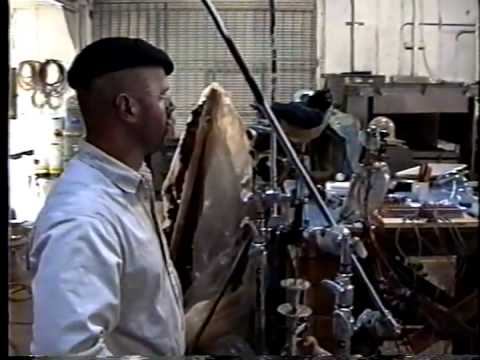My major project for the past few months involved engineering and constructing a number of animal puppets for Triad Stage’s production of “Snow Queen”. I wrote about the white-tailed stag last week. One of the most complicated puppets in terms of motion and movement was the crow. He also had the most stage time out of all the puppets, appearing on his own in several scenes. I began work on him shortly after beginning the stag, so that I could have plenty of time to develop the means to have a single puppeteer perform all the actions he needed to perform.
You can see a bit of the “evolution” of the puppet’s mechanisms in this video.
The major difference between the prototype puppet in the video and the final puppet was that I switched the pole to connect on the side rather than from behind. It gave the puppeteer much more control over the puppet by letting him manipulate the orientation of the crow’s body by twisting the main control pole, rather than having to stoop and squat.

As you saw in the video, the head and neck were controlled by an inner pole which was free to rotate on its own. Strings ran inside which could turn a bar that held the head.
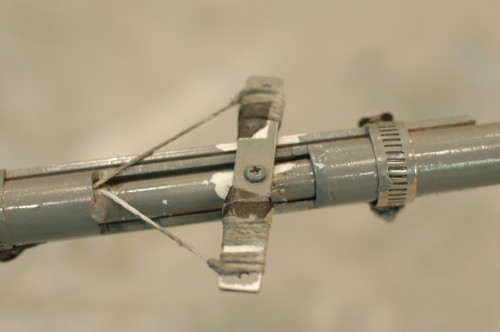
At the other end of the control bar was a similar bar that held the other ends of these strings. The puppeteer could both swing the bar back and forth and rotate the inner pole with just one hand. The other hand was free to flap the wings.

If you look closely, you will see the wings were actually attached to mousetraps. Pulling a string moved the wings down, and the springs in the mousetrap moved the wings back up when the string was released.

The pattern for the crow’s body was developed in a small prototype by the puppet designer, Bill Brewer. I enlarged this pattern and cut it out of black EVA foam sheets. I came up with a pattern for the head and beak to match the look; like the other puppets in the show, the appearance was not meant to be realistic, but was stylized to make the crow look like he was cut and folded out of sheets of paper.
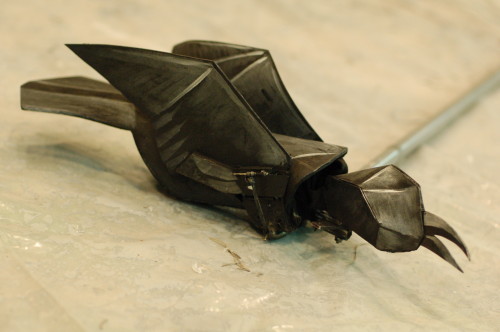
The solid black crow tended to disappear when on stage, so he was given a final paint job by the scene designer, Howard Jones. He accentuated the flat planes and folds on the crow with white and silver paint, helping make the crow “pop” against the background.





